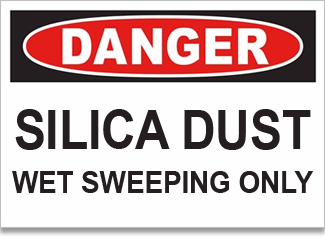OSHA Delays Enforcement of Construction Crystalline Silica Standard
03
February,
2023
2 MINUTE READ

OSHA announced recently via news release that it will delay enforcing the crystalline silica standard that applies to the construction industry. The final crystalline silica ruling was made known in March 2016, and the agency would start enforcement on June 23, 2017. However, OSHA needs time to conduct additional outreach and prepare educational materials and guidance for employers, which, according to the agency, is "due to the unique nature of the requirements in the construction standard." The new enforcement date is set for September 23 2017.
Similar to a recent beryllium ruling that OSHA postponed until later in 2017, the agency is taking steps toward thoroughness in its rulings.
What's Crystalline Silica, and Who's Affected by it?
Silica is a natural component of soil, sand, granite, and other materials. It is one of the most common elements on the planet, and is found in two forms: crystalline or noncrystalline. Quartz, cristobalite and tridymite are common forms of crystalline silica. According to the website Work Safely with Silica, "materials that contain crystalline silica are not hazardous unless they are disturbed, generating small-sized particles that can get in your lungs (?respirable crystalline silica')." Breathing crystalline silica dust can cause lung diseases such as silicosis, which over a 15 to 20 year career span can be disabling or fatal. Smoking, coupled with silicosis, can cause exponential increases in damage to lungs.
About two million construction workers are exposed to respirable crystalline silica in over 600,000 workplaces. OSHA estimates that more than 840,000 of these workers are exposed to silica levels that exceed the new permissible exposure limit (PEL). The silica PEL must be calculated with the amount of crystalline silica that's present in the dust, and with maximum amount of airborne dust an employee may be exposed to during a full work shift.
Exposure to respirable crystalline silica dust occurs during common construction tasks involving:
- Grinders
- Drills
- Masonry saws
- Jackhammers and handheld powered chipping tools
- Vehicle-mounted drilling rigs
- Milling
- Operating crushing machines
- Heavy equipment for demolition or certain other tasks
Under the Occupational Safety and Health Act of 1970, employers are responsible for providing safe and healthful workplaces for their employees. Although OSHA has chosen to delay the enforcement of their new crystalline silica limits, choosing to protect your workers in general, and not just in response to enforcement, is a responsible and conscientious approach.
So What's a Responsible Business Owner to do?
One way employers can take safety by the horns is to make sure workers know exactly where respiratory PPE is. This can be done with labels and signs. As well as having proper PPE available, in the words of OSHA, workers should be made "aware of the operations and job tasks creating crystalline silica exposures in your workplace environment and know how to protect yourself."
Respiratory protection was the fourth most cited violation in 2017. Signage and labels can help contractors and workers understand the risk factors with silica and to work safely with it. As well as stating the hazard, employers can also show workers what protection is needed with personal protective equipment (PPE) signage, including those for respiratory PPE.
 As an example, wet sweeping can be a simple way to minimize the amount of silica dust blown into the air. Reminding workers to minimize the risk of silicosis with wet sweeping is a good workplace policy.
As an example, wet sweeping can be a simple way to minimize the amount of silica dust blown into the air. Reminding workers to minimize the risk of silicosis with wet sweeping is a good workplace policy.
Duralabel offers premade signs that alert employees and can be placed in workplaces where crystalline silica is created. Employers can also create labels on-demand with Duralabel' industrial printers such as the DuraLabel 9000.
RELATED RESOURCES

Tips to Improve Silica Compliance
To further limit respirable crystalline silica dust exposure, OSHA is enforcing its rule for general, ...
Read
New Head of DOL, OSHA Delivers Empowering Speech at G20 Meeting
Now in his new role as U.S. Secretary of Labor, Alexander Acosta joined international labor and employment ...
Read
OSHA Revises Construction Rules for Confined Spaces
Rule affects general contractors and specialty-trade and employers involved in residential construction. In ...
Read.png)


